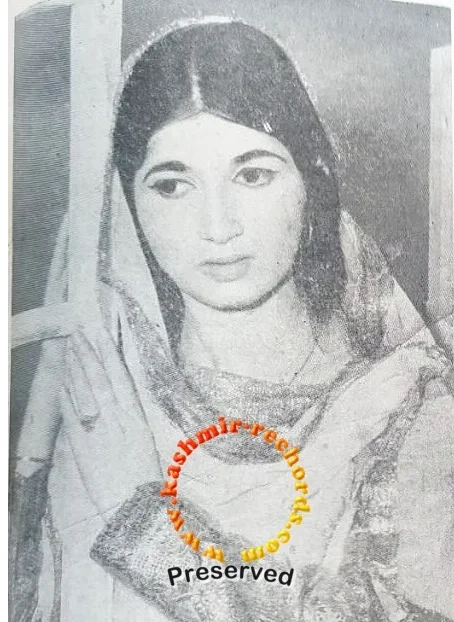(Kashmir Rechords Report)
In the nascent years of Indian television, when the country was still adjusting to the idea of stories unfolding through a flickering screen, a quiet revolution was brewing in the serene valley of Kashmir. It was the winter of 1973 when Srinagar, shrouded in snow and tradition, witnessed a rare spark—a woman stepping into the spotlight, undeterred by societal hesitation. That woman was Rita Kaul, the first female television artist from Srinagar, and a true trailblazer in every sense of the word.
Television in India made its debut on September 15, 1959, with an experimental broadcast from Delhi, under the name ‘Television India’. It was a modest beginning, using the studios of All India Radio. By October 2, 1972, Bombay had its own television channel and just a few months later, on January 26, 1973, Srinagar joined the ranks with its very own channel—an exclusive venture that would later become a part of the national broadcaster Doordarshan in 1975.

Setting up a television station in Srinagar was a strategic and cultural milestone. But it came with its unique set of challenges. Conservative Kashmiri society had very few artists, especially women, willing to step in front of the camera. Stage and screen performances were often viewed with hesitation, if not outright disapproval. Yet, amidst these constraints emerged Rita Kaul, a young woman with both courage and conviction, who dared to dream beyond the expected.
Rita wasn’t just stepping onto a new stage—she was creating one. In February 1973, she starred in a landmark television scene from the play “Dareecha”, written by the esteemed poet and literary figure, Dr. Hamidi Kashmiri. The backdrop wasn’t just a dramatic setting—it was poetry, woven with the intellect of one of the subcontinent’s foremost literary minds. Dr. Hamidi Kashmiri, a modernist and post-modernist voice in Urdu and Kashmiri literature, saw potential in young talents and encouraged them to explore television as a medium of expression. Among those he mentored, Rita Kaul was a standout.

Interestingly, Rita had already made her mark as a graded artist with Radio Kashmir Srinagar, where her voice brought Kashmiri songs to life. Her transition to television was natural, yet bold—she brought the warmth of her voice and the sincerity of her performances to the visual medium, at a time when few dared to do so.
Those associated with media, fondly remember Rita as a gifted artist who played a pivotal role in shaping the early narrative of visual storytelling in Kashmir. Her name may not always appear in the footnotes of history, but for those who remember, she was a trendsetter—a guiding light for countless women who dreamed of pursuing the arts.
Rita Kaul’s story is not just about being the first. It’s about courage, culture and the quiet strength of a woman who dared to perform when the stage was uncertain and the audience unsure. Thanks to her, the screens in Kashmir flickered to life—with poetry, with passion, and with promise.


